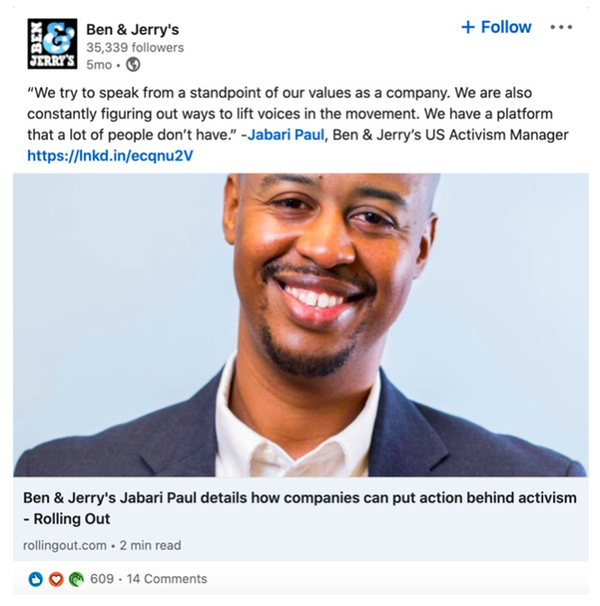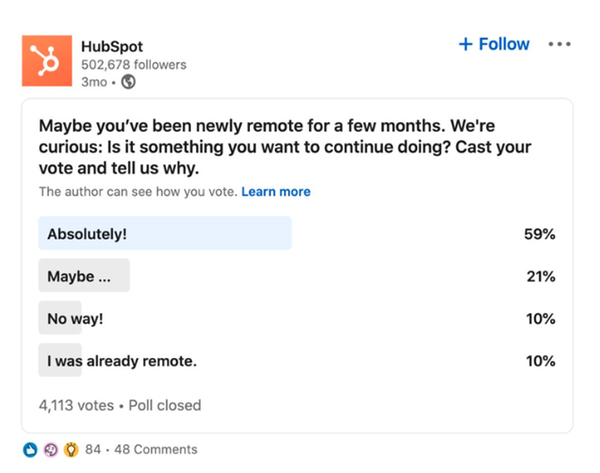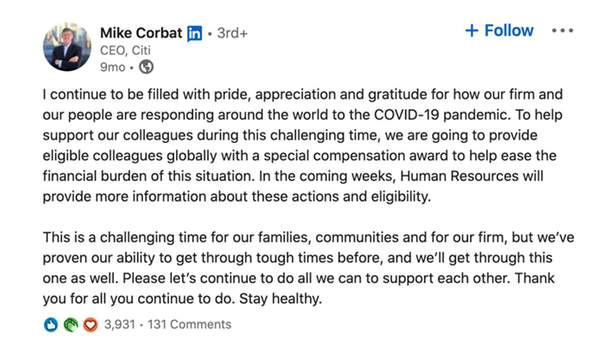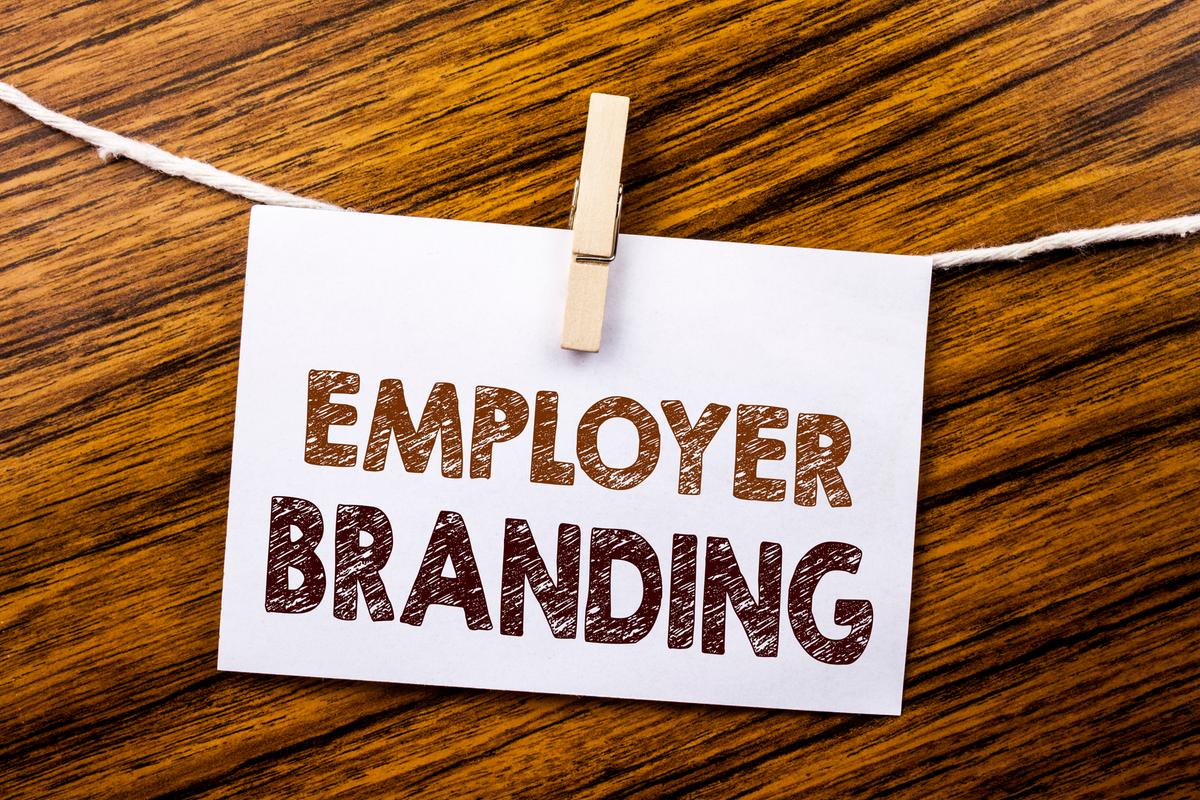At the beginning of the year, the phrase "employer branding" tended to evoke ideas of elegant offices and enviable benefits. As the end of 2020 approaches, the concept has been completely reversed, according to a LinkedIn survey.
Given how, at the beginning of the year, the news became dominated by events and social issues that were having a global impact, job applicants and customers alike increasingly sought brands so as to speak out and take a stand on issues they cared about.
In April 2020, corporate contributions on COVID-19 increased their exposure by 84% compared to the average. In June 2020, as protests against racial inequality continued around the world, a similar peak in engagement was also seen in contributions from companies on diversity, with average engagement rising by 24%.
This shift towards greater empathy, transparency and authenticity of employer brands has taken place in several different ways. And while there is no guide to navigating this radically changed landscape, it can be helpful to seek inspiration from others. With this in mind, here are some of the most significant changes and trends in recent months that can help you shape your employer branding strategy in 2021.
Go beyond phrases and focus on actions
Following global conversations about racial inequality and social justice, many companies have issued statements emphasising their commitment to diversity and inclusion. In some cases, this has ended the conversation; others have delved deeper into the subject.
For example, Ben & Jerry’s has long been known for its progressive values and speaking openly on issues such as climate justice and equality. In their contributions to the topic of racial justice, they were not afraid to use bold language and graphics, thus deviating from the general statements of other brands.

Ask more and encourage the conversation
Another way companies practise empathy in improving their employer brand is by talking less and listening more.
HubSpot, for instance, displays frequently asked questions to engage its audience in the discussion. Its LinkedIn business page offers dozens of questions and polls, ranging from topics like marketing strategies to more sophisticated issues such as: "Do you think distance work allows you to bring more of your authentic self into your work life?"

Show the more vulnerable side of your company
Many companies are increasingly using social channels to talk about current events. Managers also use their personal accounts to supplement voices in conversations and publicly thank employees for their hard work and determination in the face of unprecedented challenges. At the same time, some leaders excel in sharing and are not afraid to appear vulnerable.
One example is Ed Bastion, CEO of Delta Air Lines. When the company faced economic pressure and some employees had to take unpaid leave, Ed personally thanked an employee who used the leave to make masks for front-line workers.

Speak openly, holistically and empathetically about the well-being of employees
Until recently, employer brand content focused on candidates, while employees and consumer brand content targeted customers. In 2020 these lines began to blur. Now consumers want to know the brands they select also take care of their employees, especially in times of crisis.
This has led to a more holistic and empathetic approach and discussion of employee well-being, including physical, mental and financial health. Companies do not try to hide the problems their employees face, but instead acknowledge they are aware such struggles exist and outline concrete steps they are taking to mitigate them.
One contribution that demonstrates this approach comes from Mike Corbat, CEO of Citi, who shares details of what the company is doing to support employees, and points out that eligible colleagues will receive “special compensation fees to help alleviate the financial burden of this situation."

-bb-


